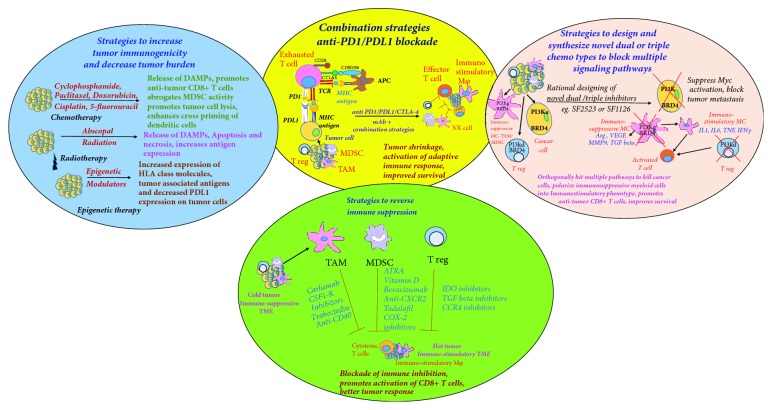Figure 1.
Combination immunotherapy strategies to reduce tumor burden and to activate durable antitumor immune response. Left panel shows cartoon of strategies to increase tumor immunogenicity, including certain chemotherapeutic drugs, radiotherapy, and epigenetic modulators which induce immunogenic cell death and release tumor antigens in TME that activate antitumor immune response. Lower panel shows cartoon of agents targeting Tregs, TAMs, and MDSCs, to block immunosuppression, to skew their polarization to proinflammatory state and to promote effector T cell function and to convert cold immunosuppressive TME into hot immune-stimulatory type. Right panel shows novel strategy of rational designing of dual inhibitory chemotypes, e.g., SF2523, dual PI3K/BRD4 inhibitor targeting multiple signaling pathways to kill tumor cells and simultaneously stimulate immune cells to provide durable adaptive immune response. Middle panel shows cartoon of checkpoint inhibitor therapy and pairing of combination therapies with anti-PD1/PDL1 blockade which may significantly improve clinical efficacy of cancer immunotherapy.

